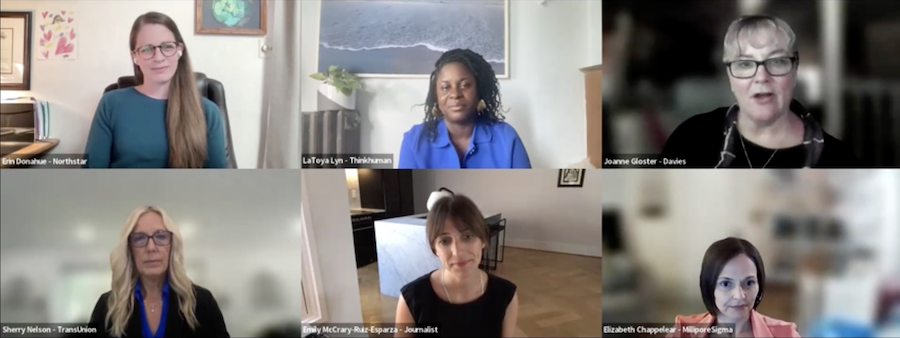Smarter Benefits by Design: Leveraging Tech and AI for Clarity, Impact, and Innovation


Answering benefits questions used to be one of HR’s most time-consuming tasks. Now, companies are using AI not only to automate those routine inquiries, but to deliver faster, more personalized support, at any time of day. Benefits leaders are using AI to make small teams feel much bigger.
The challenges of benefits administration haven’t changed much over the years, but AI is finally offering new solutions. “The common barriers are the same, whether you’re talking about AI and technology or the traditional way of administering benefits,” said Joanne Gloster, director of benefits at professional services firm Davies North America.
Employees often don’t know what benefits are available, or when. Some worry about cost. Others are concerned about privacy–especially around health or financial benefits. With AI, benefits teams are sharpening their communication strategies and making answers easier to access.
Gloster spoke during an executive panel discussion on the topic during From Day One’s July virtual conference on employee benefits. From guiding employees through leave policies to financial planning before surgery, today’s benefits tech is smarter, more tailored, and is empowering lean teams to do more with less. But for many HR leaders, the real goal isn’t just efficiency, it’s creating space for meaningful human connection.
Personalized Benefits Help, Any Time of Day
At global life sciences MilliporeSigma, head of benefits strategy Elizabeth Chappelear is leaning on their benefits administrator’s AI engine to tackle those “first level” inquiries, like dependent document verification or basic coverage questions. Chappelear said it handled more than 7,800 conversations in the first quarter of the year, 84% of which were resolved without human intervention.

The company is in the process of creating its own AI suite tailored to internal benefits policies and programs. Nevertheless, human connection remains top of mind for Chappelear, who said that “it’s one of the things that we ask during RFPs or new vendors. We’re always asking about their technology. But the flip side of that is, what’s our access to humans?”
At financial wellness platform Northstar, the company has developed custom AI engines trained by financial advisors. The solutions were built for its customers based on their employees’ unique benefits and compensation. But employees don’t need a benefits-specific question to get help.
It might be, “I’m thinking about scheduling surgery next year,” said Erin Donahue, the company’s director of advice strategy. “Our AI will discuss health plan choice and make sure they evaluate the various plans offered, but it will also bring in other related benefits that could help.”
While Northstar won’t be replacing their financial advisors with AI tools, when employees choose to use AI, the answers are specifically tailored to individuals, “so they can ask about benefits or personal finances in general, and it will answer in a personalized way based on everything we already know about that employee,” said Donahue.
Information tech firm TransUnion is also building out a process that employees can use to help with policies. “If someone’s looking to potentially take a leave of absence, we would use our AI that would then guide them through the process,” Sherry Nelson, the company’s senior director of global benefits said.
Maximizing Reach for Small Teams
At Davies, Gloster supports an employee population of 2,800 with a team of three. AI has made it possible for her team to be more productive and precise. By using AI to tailor benefits communications, she’s able to segment who’s getting the messages and how. “For instance, if I wanted to send something out to folks who are utilizing the FSA and they seem to be floundering,” she would ask the tool who those folks are and how she should tailor a message specifically for them. “I refer to it as cheating, because that’s what it feels like to me,” she said. “But the truth is, it’s allowed our team to feel much, much bigger than it really is.”
On the contrary, said LaToya Lyn, the chief people officer at Thinkhuman, an executive coaching platform, “It’s not cheating, it’s being more efficient.” Just comb through the list of requests related to benefits, and you’ll find they’re often very basic: Where can I find this? When is that going to happen? Very few of those require a human response, and AI can provide answers much faster, at any time of day.
Lyn described setting up a text messaging bot for HR questions in a past role. When they did so, “we saw our tickets go from 100 to 25. And what was so amazing about that experience was people were able to get what they needed very quickly.” And if the AI got stuck, they were routed to a person.
Despite the burst of enthusiasm for AI, Nelson at TransUnion wants to ensure they don’t lose connection with their employees, and in fact use tech and all its potential to fortify the relationship. “Part of our culture is being authentic and being present and social,” she said. “Some of it is just leveraging the technology to free us up to have those meaningful conversations and meeting the associate where they’re at. But if it hadn’t been for AI, we wouldn’t really be able to get there.”
Emily McCrary-Ruiz-Esparza is an independent journalist and From Day One contributing editor who writes about business and the world of work. Her work has appeared in the Economist, the BBC, The Washington Post, Inc., and Business Insider, among others. She is the recipient of a Virginia Press Association award for business and financial journalism. She is the host of How to Be Anything, the podcast about people with unusual jobs.
(Photo by Galeanu Mihai/iStock)
The From Day One Newsletter is a monthly roundup of articles, features, and editorials on innovative ways for companies to forge stronger relationships with their employees, customers, and communities.